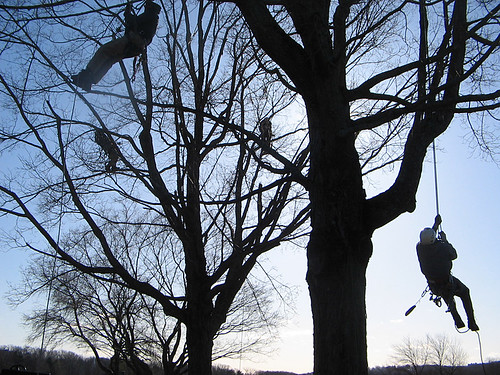
While many USDA Forest Service employees spend their summers working as Smokejumpers fighting wildfires in the west, they in turn spend their falls in the east working as Beetle Busters, helping the USDA Animal and Plant Health Inspection Service (APHIS) combat the Asian longhorned beetle (ALB).
Since these nonnative insects were first discovered in Brooklyn, New York in 1996, the ALB has caused tens of thousands of trees to be destroyed in Illinois, Massachusetts, New Jersey, and New York. They feed- and develop deep inside certain species of hardwood trees, weakening and eventually killing them.
To stop the destruction from furthering, Smokejumpers soon began working as "tree climbers" to help APHIS identify trees infested with ALB. Smokejumpers are highly trained, skilled, and experienced wild land firefighters – taking their past expertise, and putting it to use saving trees from another grave danger: the Asian longhorned beetle.
While climbing, these Forest Service employees seek out dime-sized holes that indicate the presence of the destructive ALB in tree canopies soaring over ten stories high. Once the infested trees are recorded on a GPS unit, they are ready to be marked with paint so they can be removed.
This past fall, about 40 Smokejumpers worked as tree climbers in Worcester, Massachusetts. Click here to see video, hear interviews and see photos of the Smokejumpers in action. If you would like more information about the ALB, log onto www.beetlebusters.info.


